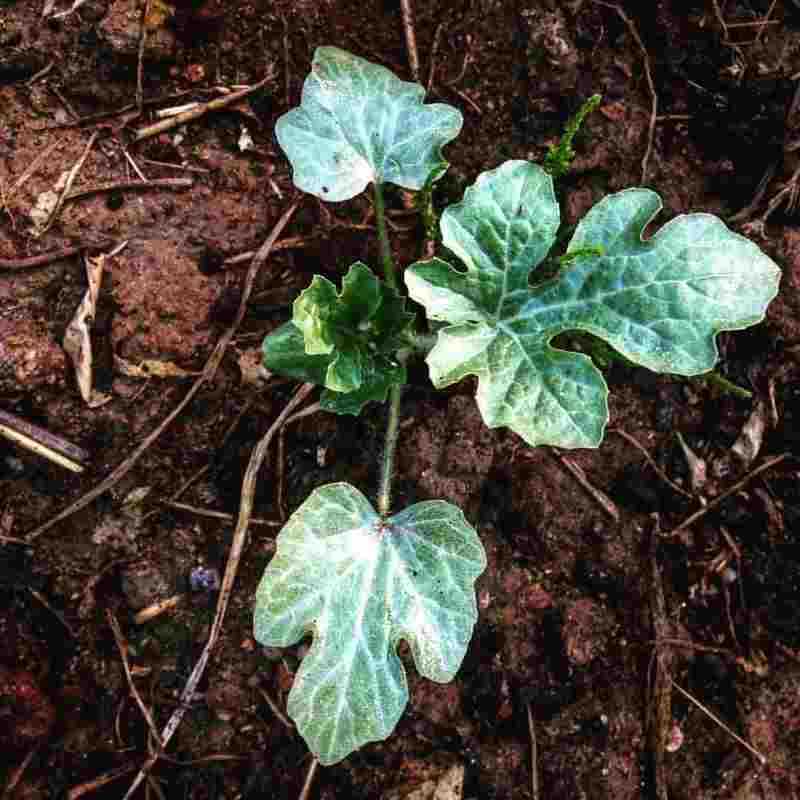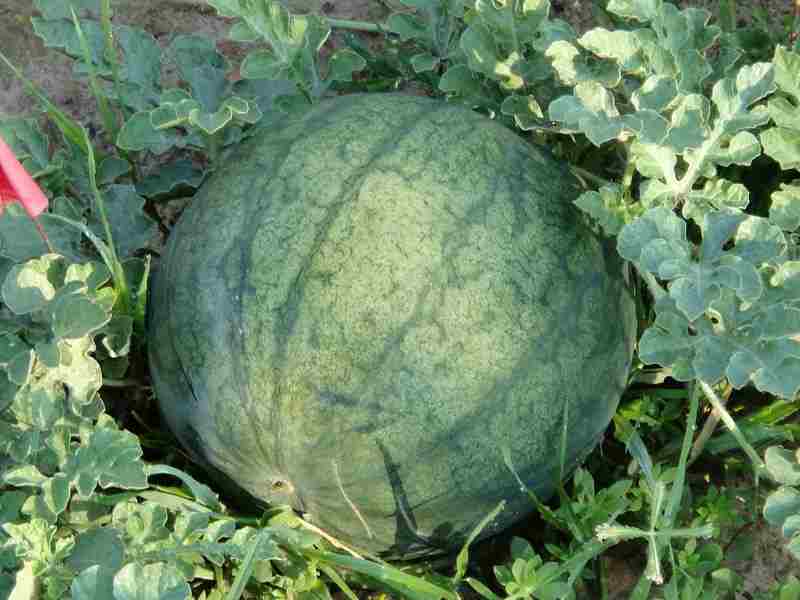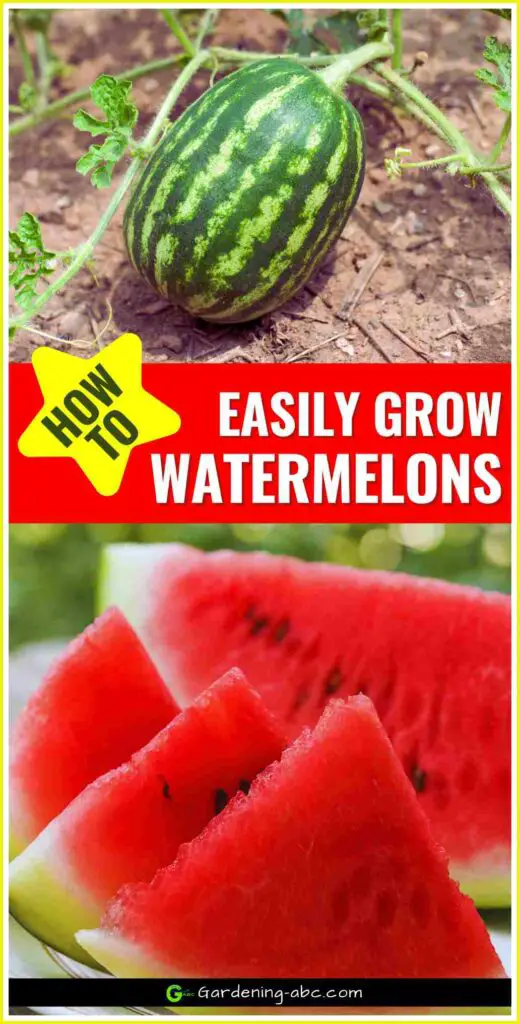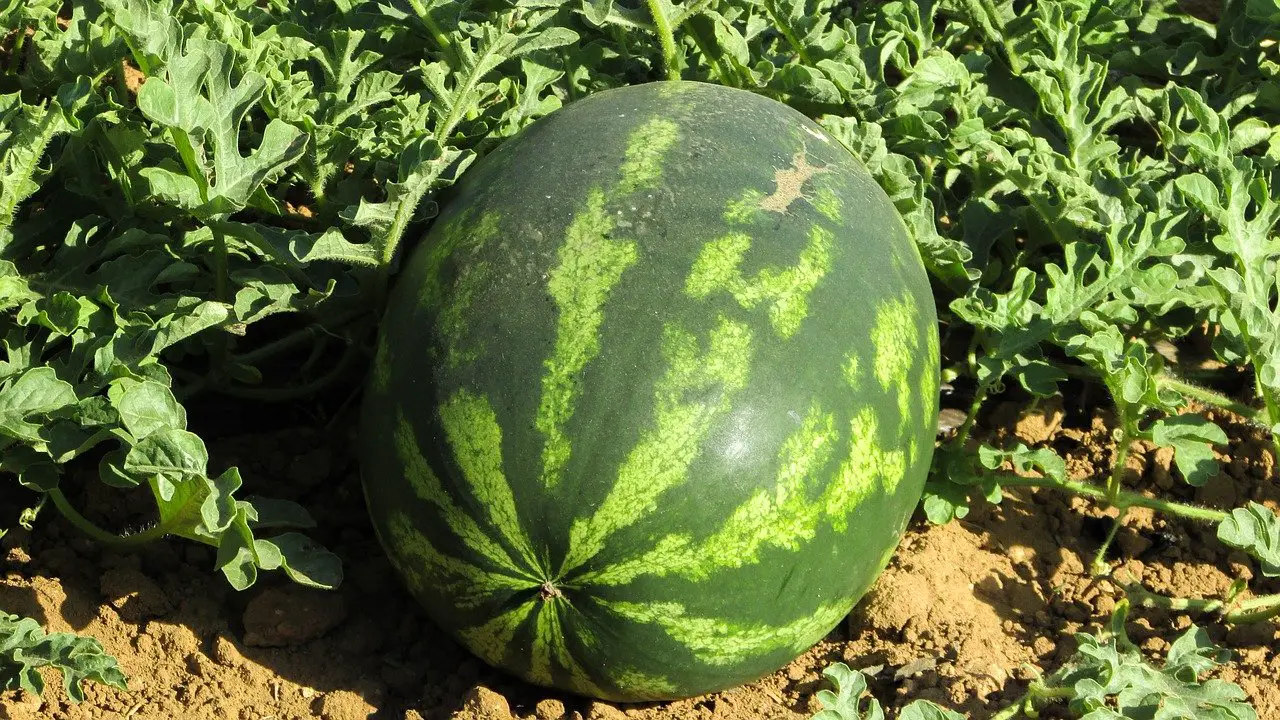We use affiliate links to run our site. When you buy through links on our site, we may earn an affiliate commission, without any added cost to you. Learn more
Watermelons are easy to grow. It is one of the plants you should consider growing in your backyard if you live in a predominantly warmer climate. You can grow watermelon plants pretty easily from the seeds.
With a little bit of knowledge and care, you can easily produce a bountiful harvest of these summertime favorites right in your own backyard.
From selecting the perfect seeds to nurturing your plants to maturity, we’ve got you covered every step of the way. So, let’s roll up our sleeves and dive into the world of watermelon cultivation to get started on this exciting journey!
Watermelon Varieties:
Here are 4 main types of watermelons.
Picnic:
They are the largest and can range from 15 to 50 pounds. They can be round or oblong.
Icebox:
They are quite smaller, and rounded, and can range from 5 to 15 pounds.
Sugar Baby:
They are small watermelons with rounded fruit, only 6 to 8 inches wide and 8 to 10 pounds, and have a dark green rind.
Sweet Beauty:
They have smaller, oblong fruit, green with darker stripes.
How to Grow and Take Care of Black Diamond Watermelons
How To Grow Watermelon Plants:
You can grow watermelons either from seeds or from nursery-bought transplants.
How to Grow Watermelon From Seeds:
Though it can be tempting to grow watermelons from the seeds of your recently eaten melon it is not a good idea. Chances are it is a hybrid and so you won’t get your desired result.
Buy watermelon seed, which is an open-pollinated heirloom variety. They are more interesting to grow.
Growing Watermelon from Seedlings:
For growing watermelons from transplants use the utmost care. The roots of the watermelon are very fragile and are very sensitive to root shock.
So the best way to grow watermelons is to plant the seeds where you want to grow your plant. The transplantation process can really hurt the plant. Select the place where you want to grow the plant.
Many growers grow their watermelon seedlings in bio-degradable pots. They can then transplant the seedlings directly to the ground with very little disturbance to the roots.
You can use row covers to protect the transplants from pests. Once you see the plant starts flowering remove the covers.
Choosing The Ideal Site For Growing Watermelon:

The best site for growing a watermelon plant is a place where you get full sun exposure. Also, the site should be well-drained so it does not get flooded after rainfall.
Watermelon needs a lot of space to grow. The vines can reach 20 feet in length. So plant watermelon where there is plenty of open ground.
The Ideal Soil For A Watermelon Plant:
The ideal soil for growing watermelon is Sandy and loamy soil. The ideal soil pH of the soil is around 6 – 6.8. Watermelon doesn’t do well in compact, clayey soils. They need airy and well-drained growing mediums for growing.
Add well-rotted manure to the soil. This will improve soil texture and will add valuable nutrients.
How to Plant Watermelon:
Before planting the seeds make sure you have mixed enough compost with the soil. They are voracious eaters.
Sow watermelon seeds 1⁄2 to 1 inch deep into the soil. If you are sowing the seeds indoors in seed starting pots, the depth should be 1⁄4 to 1⁄2 inch.
If you are growing watermelons in containers, use larger pots than usual. This will allow better root growth for the plants.
Watermelon vines need plenty of room. So while planting watermelons give a space of 3 to 5 feet between two watermelon plants.
How to Fertilize Watermelon Plants:
Watermelons are very hungry plants. So make sure you have provided them with enough to eat. Before planting watermelons, add a hand full of compost to the soil. Compost improves the soil by adding micronutrients and also helps in retaining water.
Spray a bit of liquid fertilizer throughout the garden season. Cut back on nitrogen levels but continue with phosphorous and potassium once the flowers start to form. Also if possible add seaweed fertilizers to your watermelon plant.
Avoid nitrogen-rich fertilizers once the plant starts fruiting. Excess nitrogen never helps the fruiting process and results in an increase in the growth of foliage and vines. Add a healthy amount of phosphorous and potassium. They help in fruit formation.
How To Water A Watermelon Plant:
Watering is very important for growing watermelons. It is crucial to keep the vines healthy and produce delicious fruits.
As the watermelon vines are very sensitive to drought they need 1 to 2 inches of water per week while growing, blooming, and setting fruit.
The best way to water the plant is to give water directly to the soil and not to the leaves. Wet leaves can cause fungal diseases. Learn more about how to water a plant.
Keep the soil moist, but not waterlogged. Water early in the morning. Cut back on the water once fruits are growing. Dry weather produces the sweetest melon.
Use Mulch:
You can always go for mulch to help you in watering your watermelon tree. Mulching watermelon trees helps retain soil moisture, reduces weed problems, and improves the soil near the surface.
Watermelon Flowers:
Watermelon vines grow both male and female flowers. They grow separately on the same plant. Generally, male flowers appear several weeks prior to the female flowers.
The female flowers have a swollen bulb at the base and they bear fruits.
Pollinating Watermelon Plants:
Watermelon flowers need pollination to set fruit. Watermelons are generally pollinated by insects such as bees, wasps, etc. Watermelon flowers open up for a very short time period.
So it is crucial that your garden should have regular visits by pollinators. There are several simple steps you can take to attract pollinators to your garden.
If pollinators are not very frequent visitors to your garden you can pollinate watermelons by hand. You can read more about how to do hand pollination in this post.
Watermelon Fruits:
Once the fruits start ripening, add some straw or cardboard beneath the fruit. This will prevent rot by stopping the fruit from touching the soil.
Harvesting Watermelons:

It usually takes 80 -90 days after sowing the seeds. Sometimes the times vary as per the climate or variety. Finding ripe watermelons can be tricky. They do not change in color.
To find out the best watermelon for harvesting, tap the surface of the watermelon with your fingers. If you find a dead, hollow sound, that means the fruit is ripe and ready to harvest.
Sometimes the tendrils also give signals for harvesting. If they are faded or dead that means the fruit is overripe. A fading or half-dead tendril means watermelon is perfect for harvesting.
Insect Pests:
Squash Bugs:
They feed on watermelon leaves and can harm younger plants.
Squash Vine Borers:
Vine borers tunnel through the watermelon vines. You will see wilting vines if the plant is affected by them. In severe cases, they can kill your watermelon plants.
Striped Cucumber Beetles:
They damage watermelon plants by eating leaves, stems, and fruit. These beetles sometimes also carry the bacteria which causes the wilt in watermelons.
Diseases Of A Watermelon Plant:
Following are some of the most common diseases of a watermelon plant:
Bacterial Wilt:
This disease affects the watermelon leaves resulting in wilting. Vascular discoloration occurs inside the stem or roots.
Anthracnose:
This is a fungal disease. Leaves show angular dark brown or black lesions with a yellow border. The stem and the fruits show elongated lesions with sunken centers.
To prevent the disease rotate crops every 1-2 years. Plant only disease-free watermelon plants.
Powdery Mildew:
This affects watermelon leaves. You will find white or light yellow spots on the surface of the leaves. The areas of the leaves will then fall off which would create holes in the leaves.
Control includes removing infested leaves and removing them from near the plants.
Companion Plants for Watermelons:
Watermelon is a very compatible plant in the garden. They do quite well with most plants. Some of the best companion plants for watermelon are peas, beans, onions, radishes, lettuce, leeks, garlic, chives, etc.
You can also grow cabbage, cauliflower, carrots, okra, spinach, and many more.
You should avoid plants like potatoes, cucumber, zucchini, and other melons to grow with watermelons. They create unnecessary competition for nutrients and can invite pests and diseases.
Nutritional Value of Watermelon:
Watermelons are a very refreshing fruit. Watermelons have 92 percent water. It has significant levels of vitamins A, B6, and C.
Watermelon is a good source of lycopene, antioxidants, and amino acids. The fruit also has a modest amount of potassium.
Tricks and Tips for Growing Watermelons:
- If you live in cooler climates, start the seeds indoors.
- For growing watermelons in containers add manure or compost every 3-4 weeks.
- Save space by growing melons vertically on a trellis if you lack enough garden space. Create a hammock under the fruit with a net, or stretchable clothes to support the fruit.
- To get a regular harvest use successive planting.
Can Watermelon Plant Survive Winter
As watermelons are warm-season crops, they cannot survive frost. Watermelon doesn’t survive a temperature below 33 degrees Fahrenheit.
If you live in cooler climates with shorter growing seasons give your watermelon plants a head start and plant the seeds indoors during the late winter. Then transplant them early in the spring after the frost is over.
For warmer climes in the winter take extra precautions and maintain warm soil temperatures for growing watermelon.
Conclusion:
Congratulations, you have made it to the end of this post. Growing watermelons is not just a fun and rewarding activity, but it can also provide you with a healthy and tasty source of food.
By following the tips and advice outlined in this post, you can be well on your way to growing your own juicy watermelons.
If you enjoyed this post, I encourage you to share it with your friends and family who might also be interested in growing watermelons. And don’t forget to explore more articles on this site to expand your knowledge of gardening and agriculture.
Finally, I encourage you to take action and start growing your own watermelons today. Whether you have a large backyard or just a small balcony, there is always a way to make space for a few watermelon plants.
With a little bit of patience, dedication, and love, you can enjoy the sweet taste of your very own homegrown watermelons. So go ahead and give it a try – you won’t regret it!

Amazon and the Amazon logo are trademarks of Amazon.com, Inc, or its affiliates.

Hi there! My name is Prasenjit and I’m an avid gardener and someone who has grown a passion for growing plants. From my hands-on experience, I have learned what works and what doesn’t. Here I share everything I have learned.
